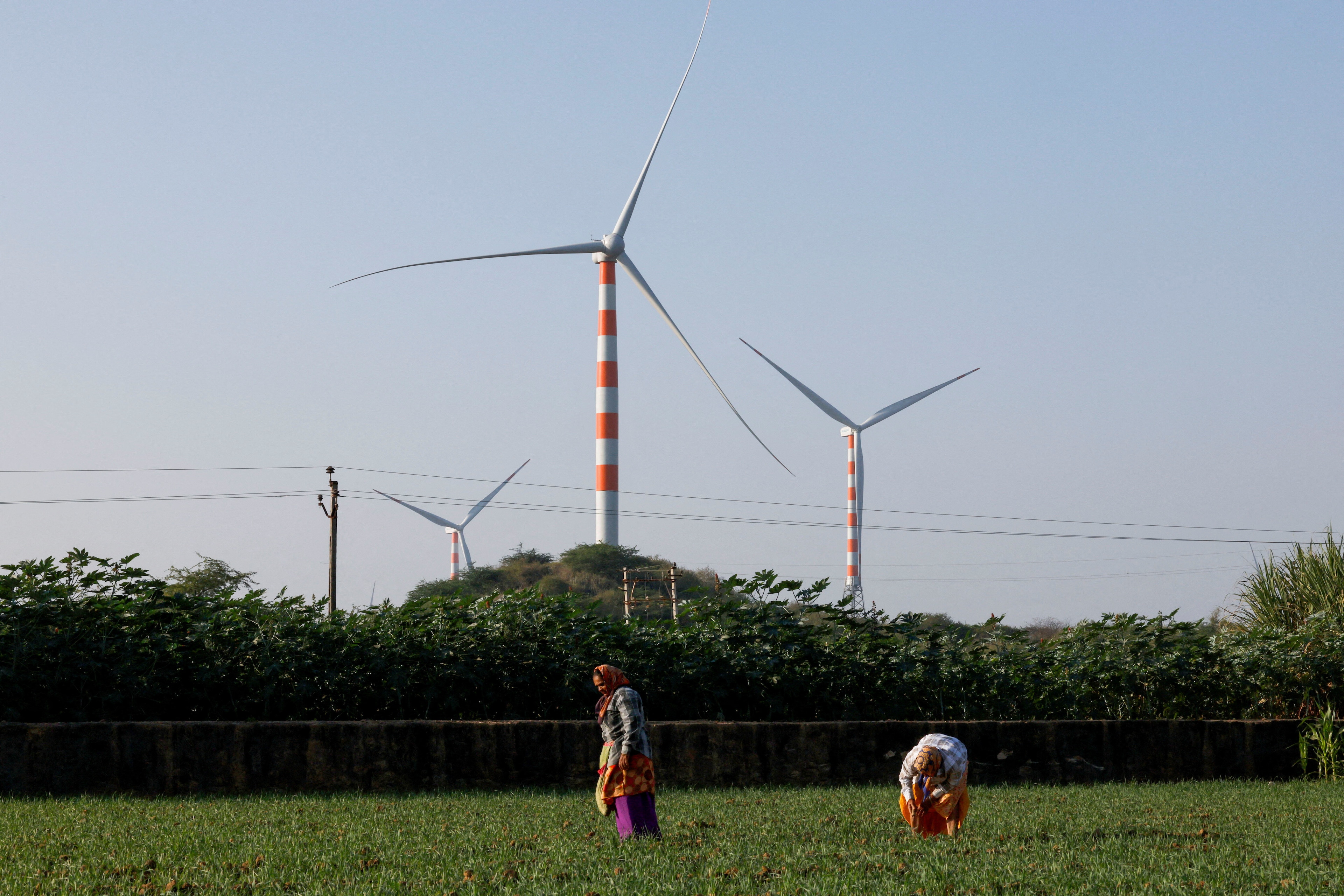Can we crack the hydrogen hype puzzle this time around?
Hydrogen hype is not new but the challenges it presents are yet to be solved
Image: Intel Free Press / Flickr
Stay up to date:
Decarbonizing Energy
- Hydrogen is back on the agenda as a potential decarbonization solution – but several fundamental challenges remain to be solved.
- These are the same barriers that stymied the last hydrogen hype cycle, 20 years ago.
- Here's a detailed look at those challenges - and why things might be different this time around.
Hydrogen is enjoying a massive resurgence in 2020 as a zero-emission wonder fuel. There is real hope that hydrogen might be able to decarbonize many parts of the economy that electrification cannot reach. Both Europe's Covid Green Recovery stimulus and Joe Biden's Clean Energy Plan include a focus on producing hydrogen with renewable energy. But critical challenges remain.
We do not yet know how to affordably transport, distribute, and store hydrogen. As such, hydrogen cannot realize its full potential.
Hydrogen has gone through hype and disappointment cycles before. Right now, the EU is leading the charge. Turn the clock back 20 years, however, and the USA and Japan were its biggest proponents.
Why did hydrogen hype not achieve its promise the last time around?
Lessons from the last hydrogen hype cycle
The physical properties of hydrogen make it challenging to transport and store. Even once we get hydrogen to cryogenic temperatures, liquid hydrogen has a measly 25% of the volumetric energy density of gasoline. Gaseous hydrogen is even worse, with only 10% of the volumetric energy density of gasoline at a reasonable pressure. Hence if we were to ship hydrogen in containers, we face the following challenges:
1. Compressed hydrogen
We could store compressed hydrogen in a container and then transport it.
But due to hydrogen’s low density, we would need very large containers. And when storing any compressed gas, there is no economy of scale: the mass of the container is proportional to the amount of gas stored. Therefore, to store a lot of hydrogen, we need a voluminous and heavy container.
The numbers are abysmal. Even using pricey super-strong materials for the container, such as composites with carbon fibre, only a measly 5% of the total container weight is the hydrogen fuel. That is neither cheap, small, nor lightweight. This is a disadvantage for compressed hydrogen in ground vehicles and is challenging for aviation since planes have to be both light and small to reduce drag for fuel economy.
Even in oceanic shipping, which is less sensitive to weight, the increased volume of compressed hydrogen fuel would be crippling. In a normal diesel ship today, roughly 4% of its storage volume is taken up by fuel. But with compressed hydrogen, the fuel size would take up 40% of the storage volume of the ship, hurting the ship’s ability to transport goods in bulk.
2. Cryogenic liquid hydrogen
We could store liquefied hydrogen in a container and then transport it. This would remove the need for expensive, heavy containers that can withstand pressurization. But hydrogen only becomes a liquid at -250˚C. Temperatures that low are both expensive and difficult to maintain, since we have to boil off some hydrogen continually to keep the rest cool.
Both compressed and liquefied hydrogen storage also incur extra losses in energy to either compress or cool the gas. Furthermore, both require specialized equipment, whose upfront cost deters adoption. Indeed, the cost of a hydrogen refuelling station – up to 10 times that of a fast-charging electric vehicle station – has hampered the wide deployment of hydrogen-powered cars despite the huge hydrogen hype.
3. Hydrogen pipelines
We could skip containers and distribute hydrogen via pipelines. This is the cheapest method in the long term. But the cost of a mature hydrogen pipeline system has to be shared by many users, and that will be expensive given that there are few hydrogen users to begin with.
It could take trillions of dollars to build a dedicated hydrogen distribution pipeline system. For example, a group of German pipeline operators recently unveiled a plan to build a 1,200km hydrogen grid by 2030 at a cost of €660 million, based on converted natural-gas pipelines. This is consistent with the rule of thumb that it takes $1 million per mile to put in suburban gas pipelines. But 1,200 km is humbling when we consider that in Germany alone, the natural gas network is 530,000 km long. The USA has a total of about 3 million miles of transmission and distribution gas pipes, delivering gas all the way to people's homes.
One shortcut being explored is to retrofit natural gas pipelines for pure hydrogen distribution. But hydrogen reacts and embrittles many components of pipelines, such as iron, steel and welds. Furthermore, hydrogen is the smallest molecule, and so it leaks through normal pipes, resulting in loss and safety hazards. And we lack affordable machinery to compress hydrogen for pipeline transport. Efforts are underway to solve these fundamental issues.
4. Storing hydrogen across time
Would things be easier if we ignored transport for now, and just store hydrogen across time?
The good news is that there are low-cost options that work at large scale, such as salt and rock caverns. But these are geographically limited. In the words of Bloomberg New Energy Finance: “If hydrogen were to replace natural gas in the global economy today, three to four times more storage infrastructure would need to be built, at a cost of $637 billion by 2050 to provide the same level of energy security.” Storing large amounts of hydrogen is one of the grand challenges and a prerequisite for a robust hydrogen economy.
This time hydrogen hype can be different
Despite these challenges, hydrogen is very much worth investing in. Electricity only contributes one-third of manmade carbon emissions, and hydrogen is still one of our best bets for decarbonizing the other sectors of our economy. Mitigating climate change is too important for us not to try all possible paths on the table.
The dramatic fall in costs of renewable electricity allows us to bet on producing hydrogen without CO2 emissions at a cost that can be competitive in the coming decade. Just solving the zero-CO2 production of hydrogen alone presents an incredible opportunity; hydrogen is already used as an industrial feedstock. For a single-use location such as a petrochemical plant, zero-CO2 hydrogen produced close by reduces the need for transportation, distribution or storage. Just replacing existing grey hydrogen in industry with green hydrogen would save 800 million tons of CO2 per year. As for wider distribution of hydrogen to achieve partial decarbonization in the near future, up to 20% of hydrogen by volume can be blended with natural gas and shipped through our current gas pipeline infrastructure without major modification. These are all good starts for the hydrogen hype, but are obviously not home runs.
What's the World Economic Forum doing about the transition to clean energy?
Policy-makers and private industry should not neglect the challenges of hydrogen transmission, distribution and storage. Such efforts span a wide range of research and development; as, for example, work on a class of materials called metal hydrides that show lots of promise as a new hydrogen storage medium. There are also efforts to convert hydrogen into ammonia or methanol, which is easier to transport, and then either use the derivative molecule as fuel, or convert it back into hydrogen at the customer destination. Last of all, there are efforts to cut the Gordian knot in the hydrogen hype cycle, and circumvent the need to move hydrogen long distance entirely, via the distributed production of hydrogen.
Such innovations across the entire hydrogen supply and distribution chain will be imperative if hydrogen is to play a consequential role in decarbonizing our entire economy.
Don't miss any update on this topic
Create a free account and access your personalized content collection with our latest publications and analyses.
License and Republishing
World Economic Forum articles may be republished in accordance with the Creative Commons Attribution-NonCommercial-NoDerivatives 4.0 International Public License, and in accordance with our Terms of Use.
The views expressed in this article are those of the author alone and not the World Economic Forum.
Forum Stories newsletter
Bringing you weekly curated insights and analysis on the global issues that matter.
More on Energy TransitionSee all
Charles Bourgault and Sarah Moin
August 19, 2025
Jürgen Karl Zattler and Adrian Severin Schmieg
August 18, 2025
Piyush Verma
August 18, 2025
Valentin Chomel and Jacques-Alexis Verrecchia
August 14, 2025
Gaurav Upadhyay and Labanya Prakash Jena
August 8, 2025
David Timis
August 8, 2025







